Tuesday, December 25, 2007
Merry Christmas!
Thursday, December 20, 2007
Reviews - 2008 Honda Accord
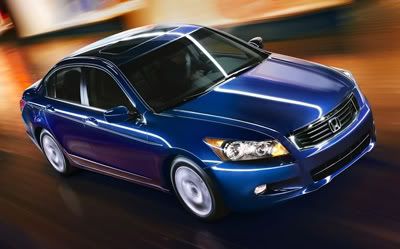
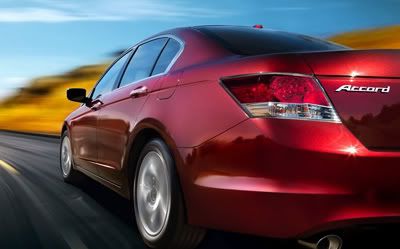
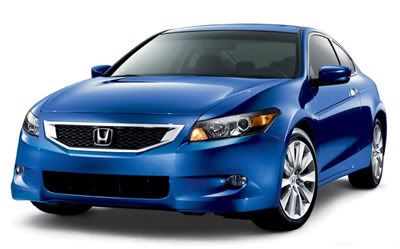
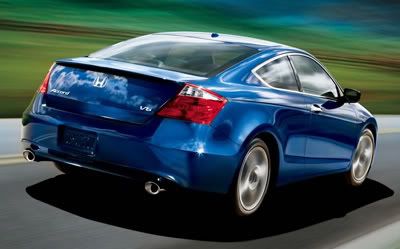
At a glance, the new 2008 Honda Accord doesn't look much bigger than its predecessor. If you checked on spec's however, you will find that not only is it a lot bigger but it's even larger than it's most fierce competitor, the Toyota Camry which has out sized the Accord for the past 6 years.
The eighth generation Accord is roughly 5 inches longer and 1 inch wider than the 2008 Toyota Camry. In fact, the new Accord is now considered to be in the large-size sedan category for the first time as it has been classified as a mid-size sedan since 1994. With the rising prices over the past couple of years, Honda has had every indication that all of their passenger car models would be breaking into a higher segment.
The drive train inherits the K-Series 2.4 Liter i-VTEC engine but with a higher base horsepower output of 177, 11 more horsepower than it's previous model of 166. The EX model is tuned to 190hp while the V6 models all receive a 3.5 Liter engine rated at 268hp with Variable Cylinder Management. Honda's Variable Cylinder Management technology adapts to the driver, allowing the engine to switch from 6 cylinders to 4 cylinders and down to even as low as 3 cylinders depending on the driving conditions. Unlike some of its competitors, the V6 models on the Accord only require regular unleaded and not premium.
One thing that Honda has always been great with is interior design. The interior of the new Accord is beautiful and well thought out. Many previous Accord owners might find that there are a bit more buttons than usual but Honda does a great job of identifying what those buttons are keeping it nice and simple. The Navigation is placed at the highest point of the dash, keeping it close to eye level with the road while compartment areas are strategically placed to maximize storage capacity.
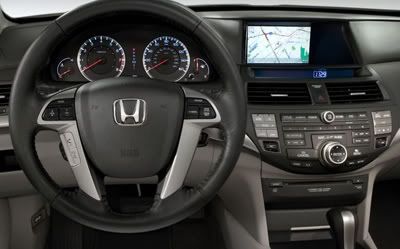
One thing about Honda's Navigation system you can be sure of is that it is the best in the industry hands down. It has a large array of functions and is incredibly easy to use. It has a 8 inch LCD display and carries over 160 voice commands with 7 million points of interest in it's database. The voice command function is simple and very user friendly. It also features Bluetooth HandsFreeLink, a system that allows the owner to make or receive calls using a hands free audio system as long as the owner has a Bluetooth enabled mobile phone placed somewhere inside the car. One great convenience about this Navigation is that it can be used even when the car is accelerating while most other factory navigations require the vehicle to be parked before it can be accessed.
Now to the exterior. The car is clearly less aerodynamic than the previous generation. The grill in the front of the Accord is something new to Honda. You can see that they are trying to put more masculinity into the car. Honda's front end on the coupe and the sedan has some resemblance but is much different from each other for the first time. While the front and the side of the car fits together nicely on the sedan, the rear end of it seems too elegant when compared to the aggressive styling front. The rear doors on the side were given a nice sporty look with the doors not circling around the wheel well. The coupe is just flat out gorgeous.
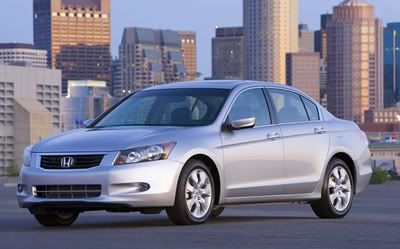
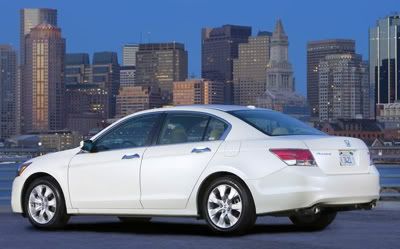
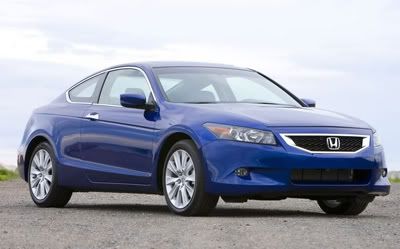
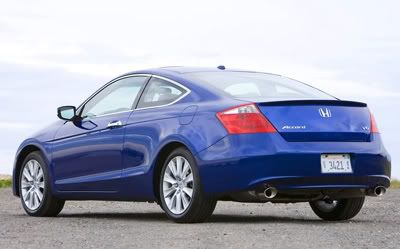
Another feature that Honda has always been good with is safety. In contrary to its competitors, Honda offers all of their safety features standard. All of the 2008 accords comes with Dual Front Airbags, Front Side Airbags, Front Side Curtain Airbags and Rear Side Curtain Airbags. Another standard feature is Vehicle Stability Assist. Vehicle Stability Assist helps to control oversteer or understeer in an emergency situation. Anti-lock disc brakes, Tire Pressure Monitoring system, and Active Head Restraints all come with the vehicle as well. The Accord will also be built with their ACE technology, an advance body structure that disperses frontal collision energy away from the passengers in the cabin.

To conclusion, the new 2008 Accord is a real winner. It is big and roomy, packed with standard features and enough safety equipment to make you feel good about putting your family in the car. Together with the Honda reliability and high resale value, the new 2008 Accord should be on the top of everyone's list who is shopping for a new mid to large size car.
Tuesday, December 18, 2007
Article - How to Inspect a Used Car Part 4 - The Drive
One important thing that people don't think about when shopping for a used car is how much money they will have to put into the car after they buy it. Realistically, there is no perfect used car. No matter how great the condition of the vehicle may seem to be, it will need some work one way or another. Always anticipate that you will be dumping at least a few hundred dollars after acquiring that new pre-owned car.
With that being said, there are a few things you should pay attention to to prepare yourself on what might need to be replaced. Before jumping into the car, inspect the tires. Check the thread for tire wear. If the vehicle is lowered or has previously been lowered, the tire wear will occur on the inside corner of the tire. Getting a good look at the tires and the inner tire will require getting on all fours so prepare to get dirty!
(picture will be available soon) Bad tire
(picture will be available soon) Good tire
Start the car and pop the hood. Just because you're not a mechanic it doesn't meant you shouldn't look at it! A few things to watch out for are oil stains. That will tell you if there's any oil leaking from the cylinders. Let the car continue to run and check for any abnormal noise. A sign of an abnormal noise could be the engine constantly sounding like it is revving on its own, as if it's short on gas and then there's gas being applied to it and then it's short on gas again. That could be a sign of poor gas flow which could be caused by a variety of different problems.
(picture will be available soon) Oil stain
Now for the test drive. Look for a nice road that you can accelerate on and pay close attention to the transmission. Some older cars tend to be jerky which is normal but if it is excessively jerky or if the shifting feels really rough, that transmission might not last you very long. Take the car on the freeway and listen for the shifts to make sure the transmission can access all of it's gears.
Drive on a straight road and let go of the wheel, just long enough to see if the car will pull itself towards a certain direction. Keep in mind that the car will naturally drift lightly towards the right because our roads are built at an angle to lead rain water into the sewer. If it pulls hard to the right or pulls left however, then you have an alignment problem.
Listen to the brakes. Heavy squeaking noises will likely mean that the car will need new brakes. Some aftermarket brakes could also produce squeaky noises too however, so test the brakes out thoroughly and try braking harder to see how long it takes for you to come to a complete stop.
Check for vibrations each time you are at a stop. Minor vibrations are okay. The most common reason for vibration in a vehicle is the lack of oil change. If there is some light vibration in the car, it might be due for a tuneup.
It is always best to bring it to a local mechanic to have them put the car on a lift and do a full inspection. From there, they can tell you if a major tuneup is necessary such as timing belt and CV Boots. If the car is close to 80,000 miles or over, it will definitely need one if it has not already been performed already.
And there you have it. A full in-depth guide on inspecting a used vehicle. I have provided all the knowledge you need to make a smart and informative purchase. I hope this guide was a great help and please feel free to email me if you have any questions. Good luck on your search!
If you know of someone who might be looking for a used car, please link them to this guide as it not only provides valuable information but it could potentially save them hundreds or even thousands of dollars.
Monday, December 17, 2007
Article - How To Inspect a Used Car Part 3 - The Interior
Open the driver's car door and look at the interior. Check the seats, the backseats, the carpet, the door carpeting and the roof. Looking at the interior of the vehicle can tell you a lot about what this vehicle has been through and how well the person takes care of their car. People who are usually uptight about their cars and takes care of them will generally keep the interior neat and tidy. People who don't care to wash or keep up with the maintenance on their cars will have spots all over their interior with trash all over the place.
To check for rollback mileage is very difficult. Still, there are a few things you can do to determine if that 96 Accord you are looking at really only has 30,000 miles. One of them is to look at the odometer on the car (only applies to older cars as almost all new cars are digital) and see if all the numbers line up with each other. A untouched odometer would have very low variation in rotation to each other. They should all line up the same way with the exception of the last digit on the right edge. Another way is to look at the wear and tear of the interior. If the interior is falling apart and looks like it's been through quite a bit, it is an easy sign that the odometer has been rolled back. You can also take it to a reputable mechanic and through some thorough inspections, they can give you a strong estimate on how many miles the vehicle has probably been through.
The picture below is a snapshot of the gauge cluster on my car. Notice how the mileage display are all lined up perfectly with the exception of the last rotating number used as a constant calculation for mileage.
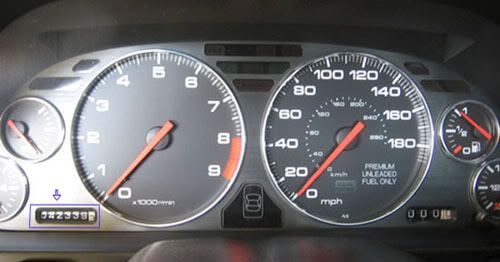
One thing to always do is to ask the owner for the keys and make sure all the power mechanics are in working condition such as windows, mirrors, sunroof, locks, air conditioning, heater, radio, windshield wipers and anything else just so that there won't be any unpleasant surprises later. Look at the edges of the door panels to see if it has been removed before or replaced. When people have taken apart a car, you can sometimes tell because it is a tight fitment and you don't always get to put it back to the way it originally was.
Article - How To Inspect a Used Car Part 2 - The Exterior
When looking at a used car, I usually begin my inspection from the rear end. Always start by checking the seams (the gaps in between each metal piece). Very rarely would a car in its original form have nonmatching gaps on one side compared to the other.
(pictures will be available soon)
One common thing that bad body shops do when repainting a rear bumper is that they leave over paint on the exhaust tips, canisters and other areas under the car around the bumper area. That is an easy way to check for repaint of the rear end.
(pictures will be available soon)
After you have checked the seams on the back of the vehicle and the under body of the car around the rear bumper area, pop the trunk. Every visual piece of the car from the mid 90's and newer (depending on the manufacturer) should all have VIN stickers (Vehicle Identification Number) on them. The VIN sticker represents the original pieces of the vehicle in which it was built from the factory. VIN stickers cannot be duplicated and the numbers should be matching with the VIN on the driver's side dashboard. I usually memorize the last 4 digits of the VIN on the driver's side dashboard so I can just look at the last 4 digits of the VIN stickers and immediately identify that they are the original ones. Here is how a VIN sticker looks like.
(pictures will be available soon) VIN sticker
(pictures will be available soon) VIN label on driver's side dashboard
Look at the hinges on the trunk and the screws on the edges. Sometimes when the trunk area gets painted, the hinges and the screws will be smothered in paint leaving no gaps between the screw and the metal piece that it's screwed onto. Lift the piece that covers the spare and look at the paint on the metal around the tire and the shape of it. A vehicle with a heavy rear end collision will have a noticeable difference on the paint and a deformed shape on the spare tire well. Sometimes there could rust as well.
(pictures will be available soon)
Head towards the side of the car. Check the seams and the VIN sticker on the door. Check to see if the paint color on the door matches the paint color on the body of the car. Open and close the door a few times. Try to notice if the door has any sort of strange resistance when closing the door. Often times when a door has been replaced, the door does not close smoothly. Check the rubber around the window area. If the rubber around the window has a strange bend like it was pushed in by a bar, the vehicle could have been previously stolen and stripped.
(pictures will be available soon) Hood VIN Sticker
(pictures will be available soon) Side Fenders VIN Sticker
(pictures will be available soon) Front Bumper VIN Sticker
Go to the driver's or the passenger's side of the car that has not been inspected and do the same as you did on the opposite side.
Article - How To Inspect a Used Car Part 1 - The Paint
Always run a CarFax before heading out to look at a used vehicle. Maybe only 30% of every accident gets reported but it is still a useful tool.
Let's start off with paint. Every repaired car will need a paint job one way or another. There are several ways to identify a repaint.
1. Over spray
Let me give you an example. Let's say you had a small boo boo on the lower rear corner of your bumper and you take it to your local body shop to get it repainted. Well this body shop decided to paint your bumper without removing it since it's only that spot that needs to be repainted, not the whole bumper. This leads to a good chance of over spray around the vicinity of the spot that they painted. This happens very often and is easy to catch by looking underneath the car to see if the paint got onto the metal areas. For the rear, it can be seen easily since it is all metal and the two tone would stand out. Usually over spray would be left on the exhaust tips and canisters should it have been painted on the exhaust side. For the front, you can check by popping the hood and look for over spray around the engine bay.
2. Dullness
When people pay for cheap paint jobs, the results are cheap quality. When a car leaves the factory, the vehicle is painted up to 5 coats with a protective gloss coating. When a vehicle is repainted poorly, you lose the gloss coating resulting in a dull looking area when compared to the paint around it.
3. Bondo
Bondo is used to fill dents to level the surface of the car. You can tell a car has been bondo'd when the texture of the surface feels different. It can also be seen by the naked eye but a little more difficult on darker colors. Look for dullness on the paint as well since after bondo is used, it needs to be repainted afterwards.
4. Bubbles
The work area of the body shop is extremely dusty. A lot of body shops just leave their parts on top of wooden stands to dry after the paint job. When they do that, dust and other particles will get onto the paint leaving small little bubble texture on the painted area.